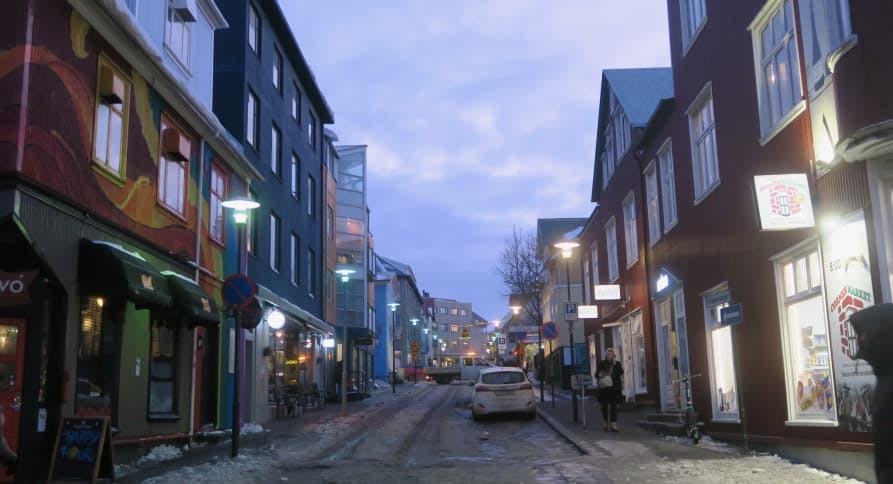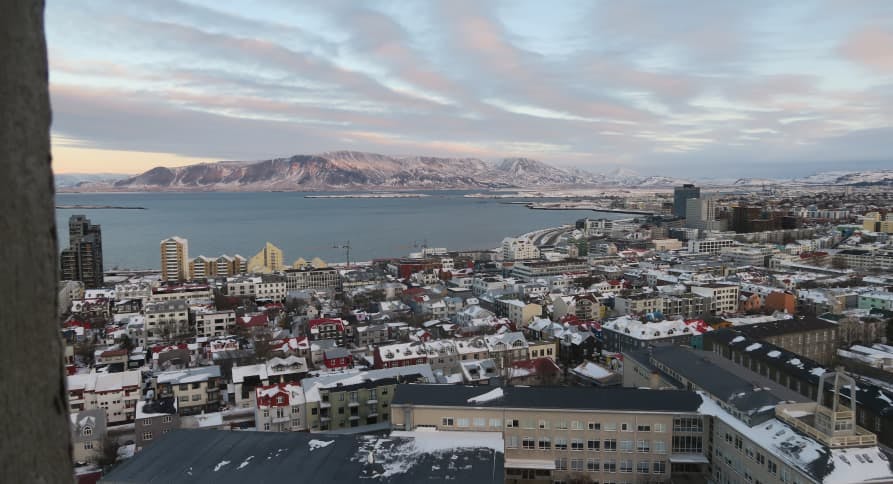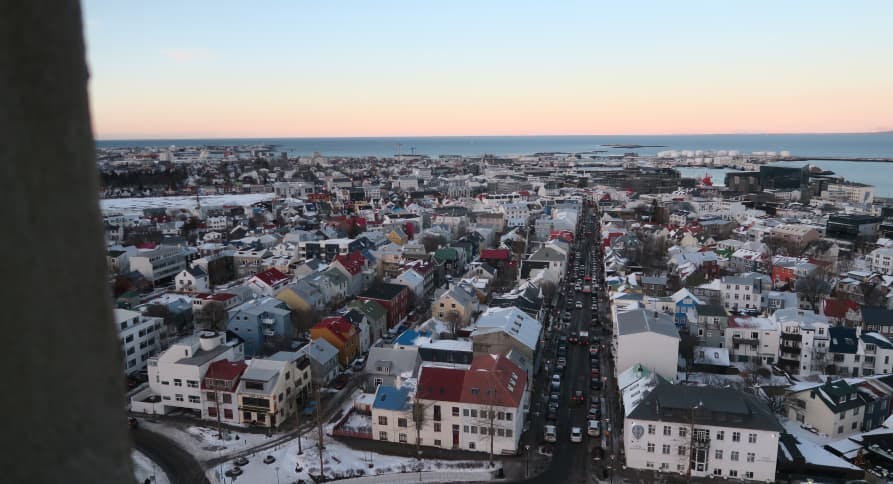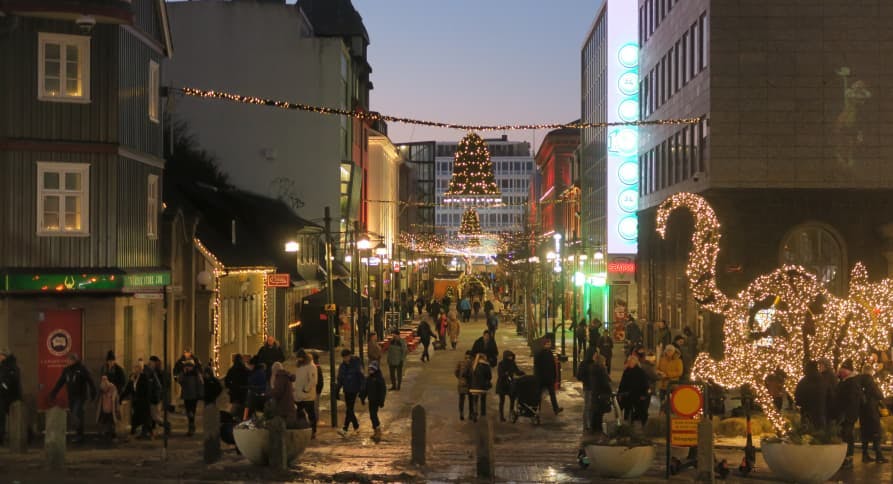
California Climate Accountability Package: SB253, SB261, & SB252
What is the California Climate Accountability Package, and how do SB 253 and SB 261 (SB 219), and SB 252 help the state work towards their environmental goals?
ESG / CSR
Industries



If you’ve ever been to Iceland in the thick of winter, you’d know that while you’ll have to deal with some of the shortest days on Earth in exchange for the possibility to see the Northern Lights – it’s also a frigid climate with rampant snowstorms, which is why Iceland has made use of heated sidewalks.
Heated sidewalks are helpful in countries such as Iceland where snow is plentiful in addition to other hazardous winter weather conditions such as sleet, black ice, and more.
In this article, we’ll explain what heated sidewalks are, how Iceland has optimized their heated sidewalks, and other countries in the world that could utilize mother nature to do the same.
Heated sidewalks are walkways which make use of radiated heat, usually from electricity or hydronic tubing in order to help melt snow and make sidewalks safer for pedestrians and also to avoid the need to shovel snow.
Heated sidewalks usually work one of two ways:
The system has two key components:
💡 Hydronic tubing is more energy efficient than electrical cables for heated sidewalks.
Other benefits of heated sidewalks include:
👉 Heated sidewalks are a worthy investment for snowy, frigid cities such as Chicago in the United States, Sapporo in Japan, and urban areas in Iceland.

Iceland has implemented their own version of heated sidewalks, and it has helped the country in numerous ways – such as helping to keep tourism active and reducing the need for citizens to shovel their own driveways.
Ultimately, Iceland’s heated sidewalks have indirectly helped to boost tourism growth. Known as the bridge between North America and Europe, the country’s airline ‘Iceland Air’ often offers long-haul stopovers between major U.S. and European cities – allowing travelers time for a quick trip to Reykjavik or the Blue Lagoon.
A few other ways Iceland’s heated sidewalks have benefited the country include:
👉 In fact, Iceland is expecting to welcome a whopping 2.38 million visitors in 2024 – which is a 7% increase from 2023. Therefore, Iceland’s sidewalks are likely to continue helping the country boost its economy and income from foreign visitors – especially as overnight stays are beginning to increase across the country, too.

Iceland optimized their heated sidewalks through the use of the country’s readily available geothermal energy.
Essentially, most heated sidewalks in the world need to be powered by either electric cables or hydronic tubing – both of which Iceland doesn’t need to depend on in the same capacity as other snowy cities looking to implement heated sidewalks will be required to rely on, such as Saskatoon in Saskatchewan, Canada.
Iceland made use of its geothermal energy to help power the components installed underneath the sidewalks in areas such as rainbow road in Reykjavik. As a result, this allows the country to enjoy the benefits of using a heated sidewalk without undergoing expensive electric repairs, energy bills, or increasing the country’s energy usage.
Here are a few other ways that Iceland optimized their heated sidewalks:
Iceland has optimized its heated sidewalks through various methods:
👉 It is important to note that not all of Iceland makes use of heated sidewalks, but dense areas such as the main streets of Reykjavik have all incorporated the use of heated sidewalks to enhance safety and boost tourism.

Iceland hasn’t only used their geothermal energy for heated sidewalks, but to harvest energy to be used across the country – such as by helping to heat Icelandic homes and reduce the overall fossil fuel usage throughout the nation.
There are several other ways that Iceland utilizes its geothermal energy to economically benefit the country and reduce its over energy consumption, such as by:
💡Did you know? Iceland’s infamous ‘Blue Lagoon’ is naturally heated by the existing hot springs, which means it may be warmer or cooler in different areas throughout the Blue Lagoon depending on where in the Lagoon you swim and if you are near a warmer pocket of geothermal energy.
👉 Overall, Iceland’s impressive and innovative use of their geothermal has helped to reduce electricity prices, create jobs in the country, and even boost tourism – all of which help to make the country more attractive to both tourists and residents.

There are several places in the world that could make use of geothermal energy activity and use it to reduce their energy consumption and overall environmental impact – such as Hawaii, Japan, and New Zealand.
Here is how each of these places could harvest geothermal energy and use it to optimize their energy consumption the way that Iceland has:
Overall, the heated sidewalks in Iceland haven’t only benefited the country and its inhabitants – but its success could help to inspire other countries to also utilize their geothermal energy. It may be a massive project in the beginning, but in the long-term – mechanisms such as the heated sidewalks in Iceland can help countries to reduce their energy usage and play their part in the fight against climate change.
If reading this article on how Iceland optimized their heated sidewalks has made you interested in reducing your carbon emissions to further fight against climate change – Greenly can help you!
At Greenly we can help you to assess your company’s carbon footprint, and then give you the tools you need to cut down on emissions. We offer a free demo for you to better understand our platform and all that it has to offer – including assistance with boosting supplier engagement, personalized assistance, and new ways to involve your employees.
Learn more about Greenly’s carbon management platform here.